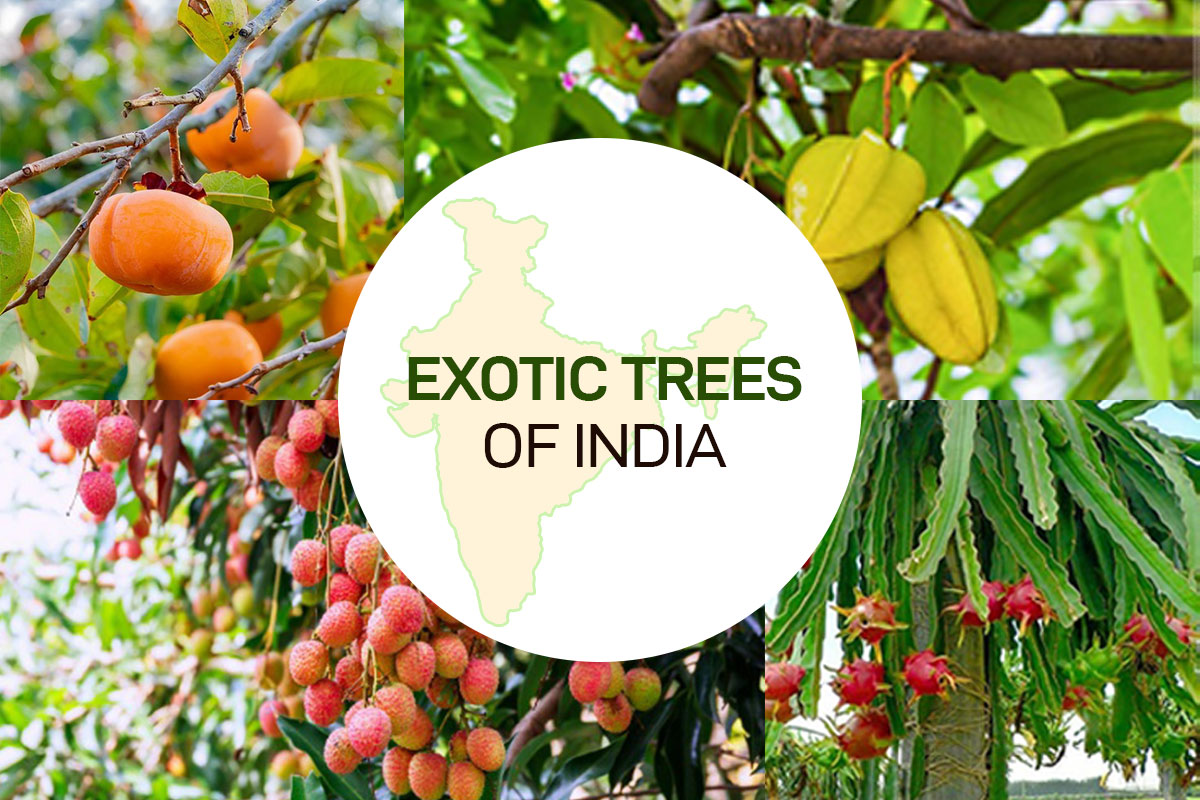Exotic Trees of India

Back in school, everyone was taught that deciduous trees and coniferous trees were the different types of trees that existed. However, the world of trees is more diverse, unique, and mystifying than the limited types of trees we ever came across in our textbooks. Like us humans and our multiplicity, trees have their own set of varieties, which can be quite interesting if one takes a deeper dive into their world. What can be most exciting for many are the exotic trees! Yes, trees have their own set of exotic species which are lesser known yet intriguing in nature. There are certain exotic species within India itself.
However before we dwell into the different kinds of exotic trees, it is important to understand what trees are considered exotic in nature. Exotic trees are the trees which are not growing in their natural habitats or are growing in areas where they don’t usually grow. Interestingly, despite being in unnatural conditions, exotic trees grow faster than their indigenious counterparts. They are more profitable than the native plantations in terms of timber contribution.
Eucalyptus tereticornis is a tree that covers roughly 2% of cultivable land in north-western India. It was introduced to India by Australia in 1790. During the period of 1970-1985, huge plantation projects were set up for E. tereticornis.
What is locally known as “kabuli kikar” is actually another type of exotic tree called Prosopis juliflora. It was introduced to the Indian subcontinent a century ago by South America and currently covers vast expanses of alkali lands, wastelands, saline lands, field boundaries, and road sides. It can be identified by its characteristics: 3/4-m high, evergreen trees with a spreading crown and drooping branches. Since it is very easy to establish and grows fast even in adverse conditions, it is an important tree to reclaim deserts and a good source of fodder, timber, gum, charcoal, fuelwood, etc. However, P. juliflora has started alarming ecologists. It is becoming a dangerous weed that is spreading widely and affecting the existence of indigenous species and shrubs in India.
Leucaena leucocephala is popularly perceived as a miracle tree in India as it provides fodder, fuel, pulpwood, and timber. It was introduced to India from Hawaii, USA.
Acacia tortilis was introduced in India by Israel in 1958 to provide large-scale plantations in the desert areas of Rajasthan and Haryana. However, due to the undesirable quality of its wood, which resulted in low market demand, eventually the plantation projects were largely discouraged.
Despite having exotic trees in India, they are not widely acknowledged or celebrated. Part of the problem can lie in the fact that they are only termed exotic according to professionals but are deemed just another set of native trees by most oblivious Indians. Native plantations are given more importance as compared to the exotic trees due to their ability to adapt to the local conditions and their precedence of their natural habitat. Therefore, their status as exotic trees and their ability to supply important resources go unnoticed by many farmers if the trees fail to have commercial viability. In such a situation it becomes important to educate the farmers about the significance of such trees in the ecosystem. They need to be educated about how they can integrate the exotic trees into their agroforestry farms. Additionally, there needs to be more conscious efforts to conserve and aptly utilise the exotic trees present in India and it can only start by consciously appreciating their existence in our ecosystem.


